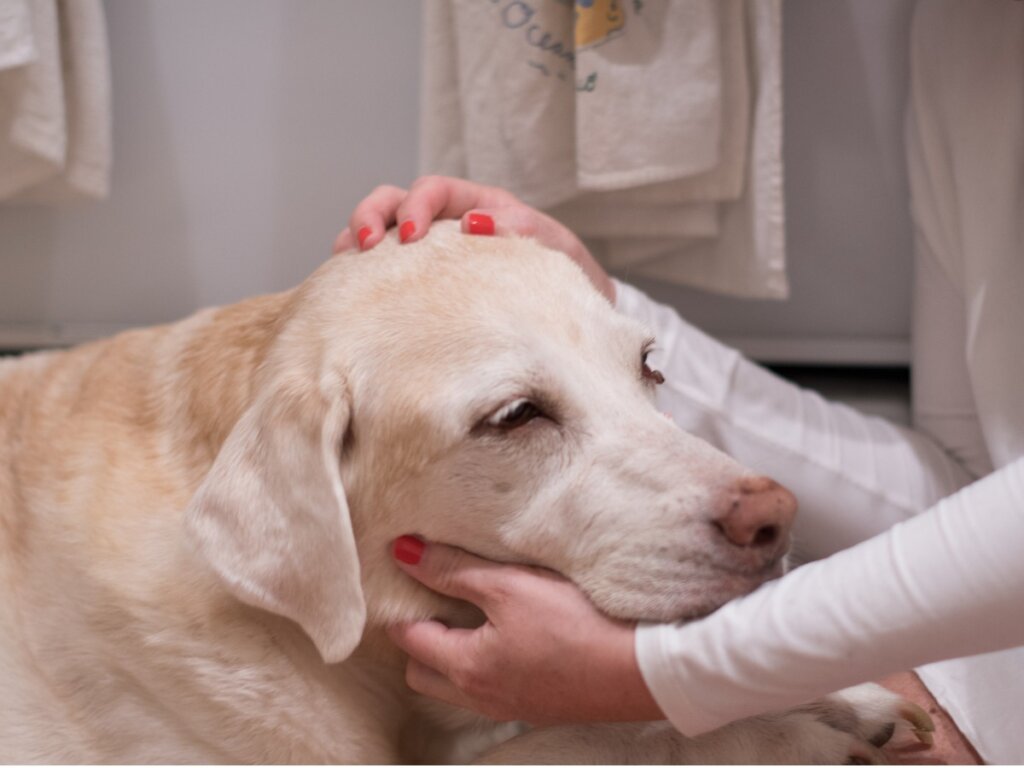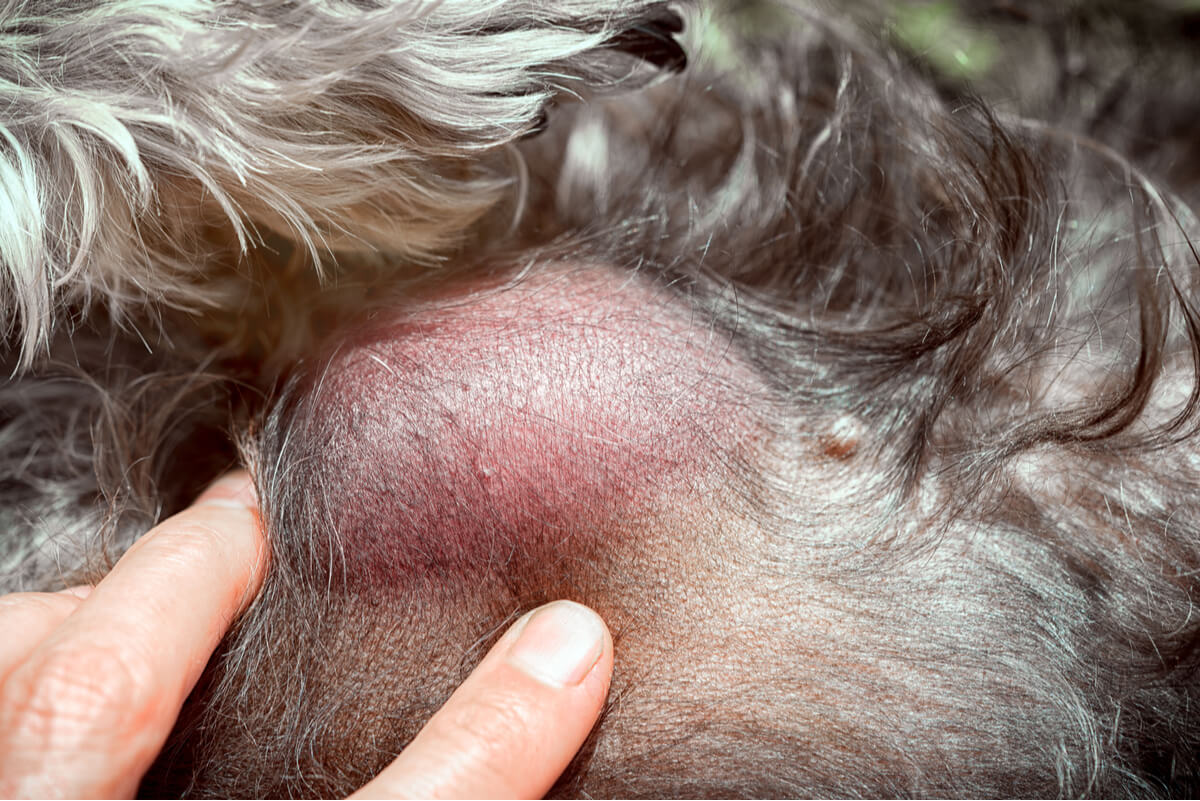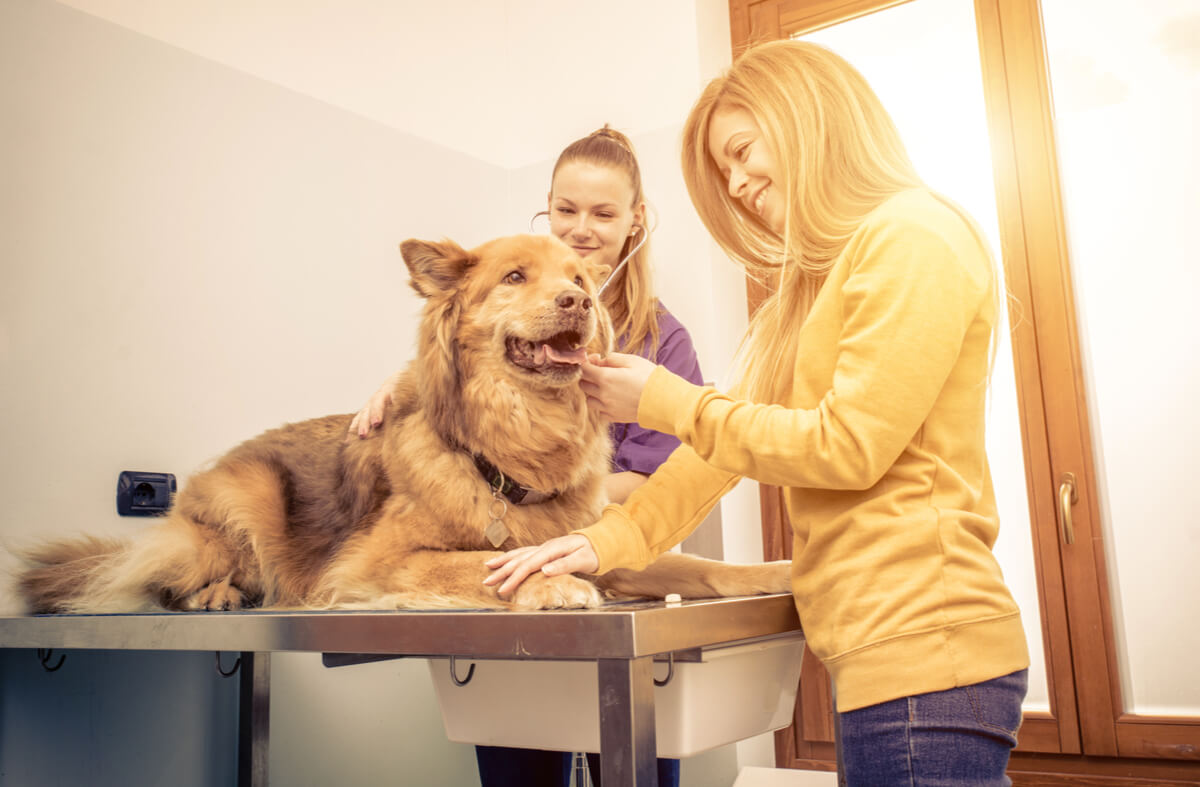12 Signs Your Dog Might Have Cancer

According to the veterinary portal VCA Hospitals, 1 in 4 dogs develops some type of cancer during their lives. Malignant neoplasms are one of the main causes of death in canines, as more than half of older dogs have them in their final stage. There are many signs that indicate that your dog might have cancer and here we’ll tell you about them.
As unpleasant as this topic is to us as owners, it’s necessary to emphasize that the rate of appearance of cancer is very similar in dogs and in humans. It’s our duty to detect the early signs of a malignant tumor in the pet’s body, as timely treatment can mean the difference between life and death for the animal. Keep reading.
What is cancer and how does it manifest itself in dogs?
As the NIH indicates, the term “cancer” refers to a group of diseases that are characterized by the excessive growth of certain cells. In other words, a cell line suffers a genetic mutation in its DNA that makes it grow faster than normal and doesn’t die when it touches it, which encourages tumor formation.
The tumor is considered malignant or cancerous when it has the ability to grow rampantly and spread to other parts of the body. If cancer cells travel through the blood or lymphatic system to other organs of the animal, it’s possible that a secondary tumor will form in a tissue other than the original one, a condition known as metastasis.
As we’ve said, up to 50% of elderly dogs have some type of cancer. Learn to detect with us the signs of a malignant neoplasm in your pet, because when talking about tumors, the speed of diagnosis is a determining factor.
1. Lumps that grow under the skin
Although a mass under the skin isn’t always a sign that your dog has cancer, it requires immediate veterinary attention in all cases. Whatever the case, it should be noted that most of the lumps in dogs are lipomas – benign and harmless fat growths in the animal.
Less than half of the lumps on a dog’s skin are malignant in nature.

2. Abnormal odors
It’s common for your dog to smell a bit (especially from their mouths). However, bad breath in canines can be an indication of oral cancer, especially if it’s accompanied by bleeding and difficulty biting.
3. Abnormal discharge
As much as bad smells can be common in dogs, what is never normal is that it also presents purulent discharges that arise from the mouth, eyes, ears, or rectum. This indicates that there’s an infection in some tissue, which in turn can be derived from the lesions caused by a cancerous tumor. This clinical sign signifies a serious veterinary emergency.
Pus is an indication that the animal’s immune system is fighting an infection.
4. Abdominal bloating
Prolonged abdominal bloating is one of the clearest signs that your dog has cancer. A tumor in the peritoneum or in various organs can cause an accumulation of fluids to occur, which causes the animal’s gut to swell. Beyond neoplasms, this clinical sign also shows certain intestinal problems.
5. Unexplained weight loss
As in humans, unexplained weight loss in dogs is often a sign of cancer or some other systemic problem. If you feed your canine well and you notice its ribs more and more, you should go to the vet immediately. Its diet may not be adequate or it could have a serious condition.
6. Coughing
Primary tumors in the lungs of dogs are very rare, but they almost always lead to some type of cancer of the airways. Coughs are one of the first symptoms in this type of medical condition, as the animal’s body is trying to cough up a foreign element in order to breathe well (in this case the tumor).
7. Difficulty breathing
Difficulty breathing in dogs can be an indication of lung cancer or that a tumor in another part of the body is causing harmful effects in the chest cavity. In the most severe cases, the inability to obtain adequate oxygen results in a condition known as cyanosis.
In cyanosis, some tissues of the dog (such as the gums) turn bluish due to a lack of oxygen.
8. Lethargy and depression
This is one of the main signs that a dog might have cancer, but it’s quite subjective. Only the owner knows how energetic their dog was before this started to happen, and you must also take into account that dogs age at a relatively accelerated rate and it’s possible that fatigue is associated only with the passage of time.
In any case, a healthy elderly dog still wants to play and exercise, even if it’s slower and with more breaks. If it isn’t excited about anything, gets out of bed very little, or has trouble moving around, it most likely has a musculoskeletal or systemic problem that needs to be addressed.
9. Difficulty eating and swallowing
As we said earlier, a dog that doesn’t bite well and that has swallowing problems may well have oral or esophageal cancer. The latter type of neoplasm is also often accompanied by vomiting, dysphagia, and ptyalism (excessive secretion of saliva).
10. Changes in excretory behaviors
The “time to go to the bathroom” and the consistency of the dog’s feces tell us a lot about its general health. For example, diarrhea is usually an indication of gastroenteritis, while chronic constipation indicates the existence of a blockage or imbalance in the canine’s intestinal tract. Also, the presence of blood in their stools can indicate cancer and other serious health problems.
11. Evidence of pain
When a dog is in pain, it may vocalize it and make pitiful whines more than usual. It’ll also be restless, sad, and will constantly seek you out. It isn’t necessary to develop this point any further, because every owner will know perfectly well if something isn’t right with their pet just by looking at their eyes.
12. Wounds that don’t heal
One of the signs of cancer in a dog is seen in healing problems. Your dog may get a wound and it doesn’t heal, or maybe sores and bruises appear for no apparent reason. These signs are typical of hematological disorders, among which is the famous and dreaded leukemia.

As you can see, the signs of cancer in dogs are many and often nonspecific. Most likely, any of the aforementioned signs could be due to an infection or a specific acute medical condition. However, it’s the owner’s obligation to suspect the worst and seek an accurate diagnosis in all cases. When we’re talking about the diagnosis of tumors, every second counts and increases the chances of survival.
All cited sources were thoroughly reviewed by our team to ensure their quality, reliability, currency, and validity. The bibliography of this article was considered reliable and of academic or scientific accuracy.
- What is cancer? VCA Hospitals. Recogido a 23 de agosto en https://vcahospitals.com/know-your-pet/what-is-cancer
- Dog Cancer – Symptoms, Diagnosis & Treatment, Countryside. veterinary clinic. Recogido a 23 de agosto en https://www.countrysideveterinaryclinic.org/services/dogs/dog-cancer
- Khanna, C., Lindblad-Toh, K., Vail, D., London, C., Bergman, P., Barber, L., … & Withrow, S. (2006). The dog as a cancer model. Nature biotechnology, 24(9), 1065-1066.
- Mulligan, R. M. (1975). Mammary cancer in the dog: a study of 120 cases. American journal of veterinary research, 36(9), 1391-1396.
